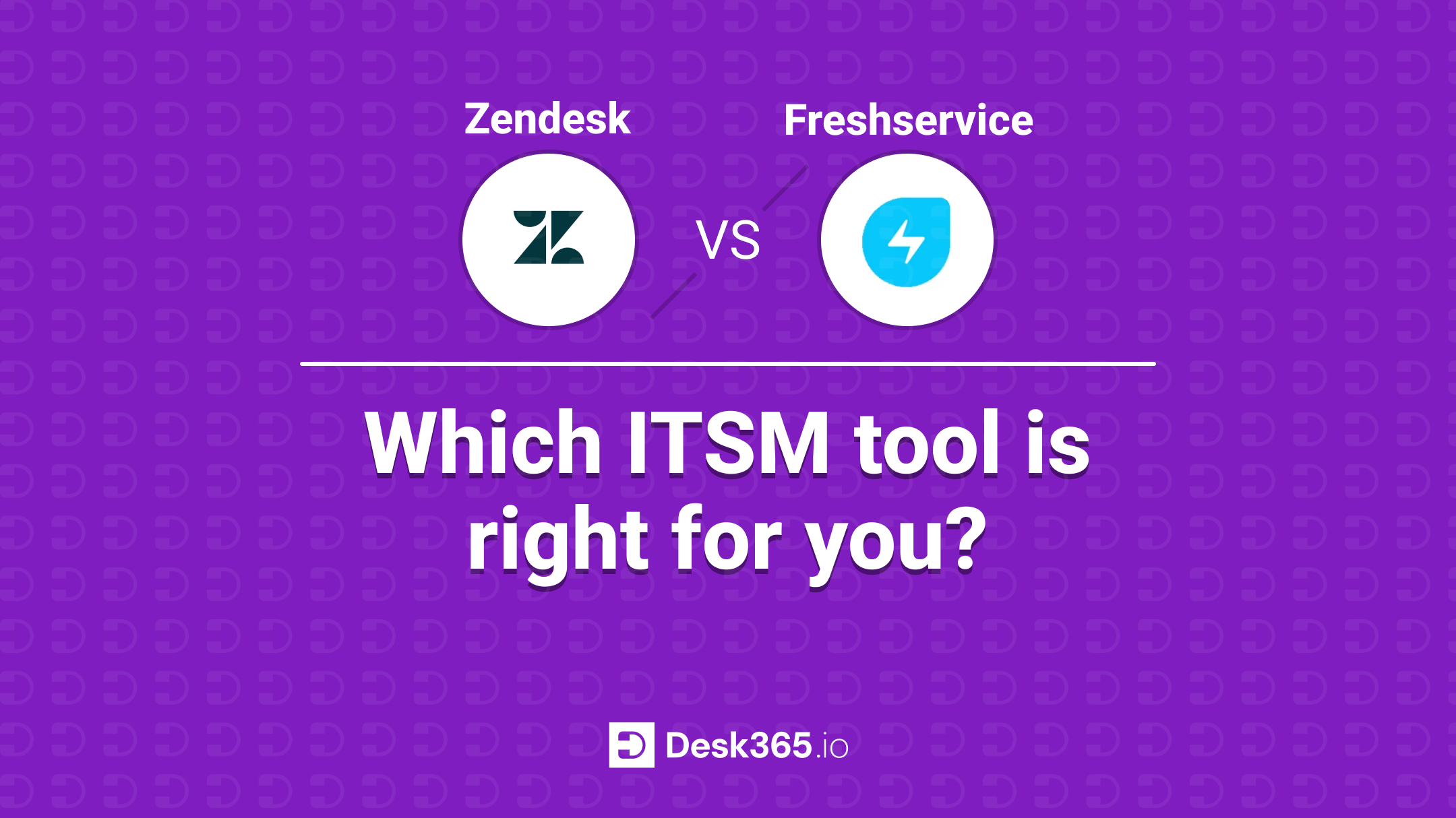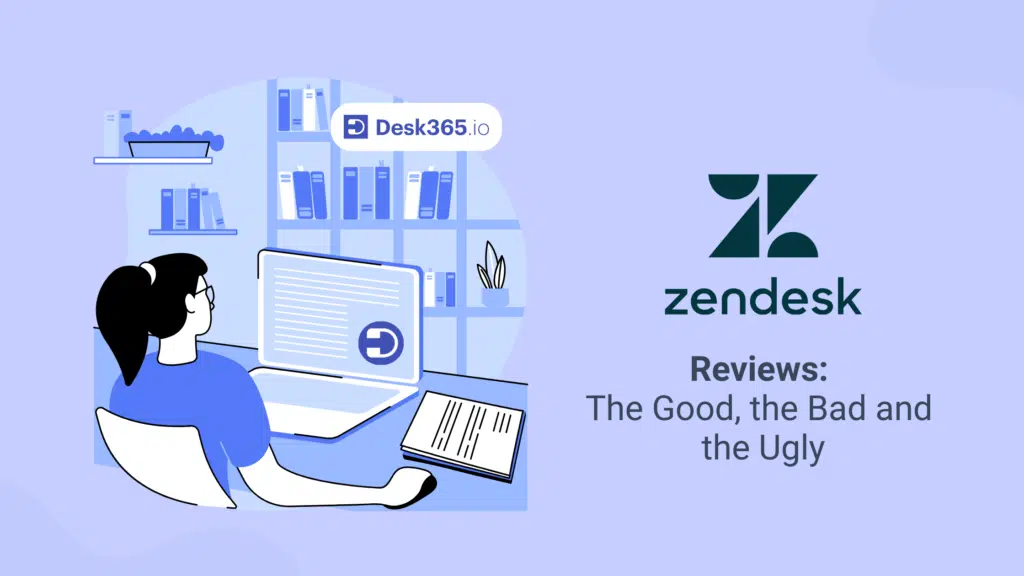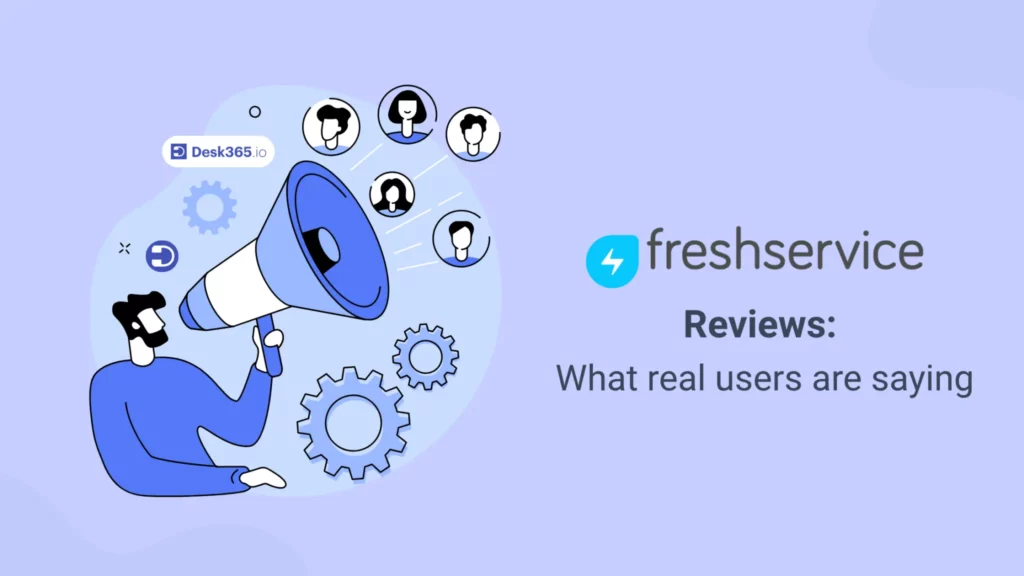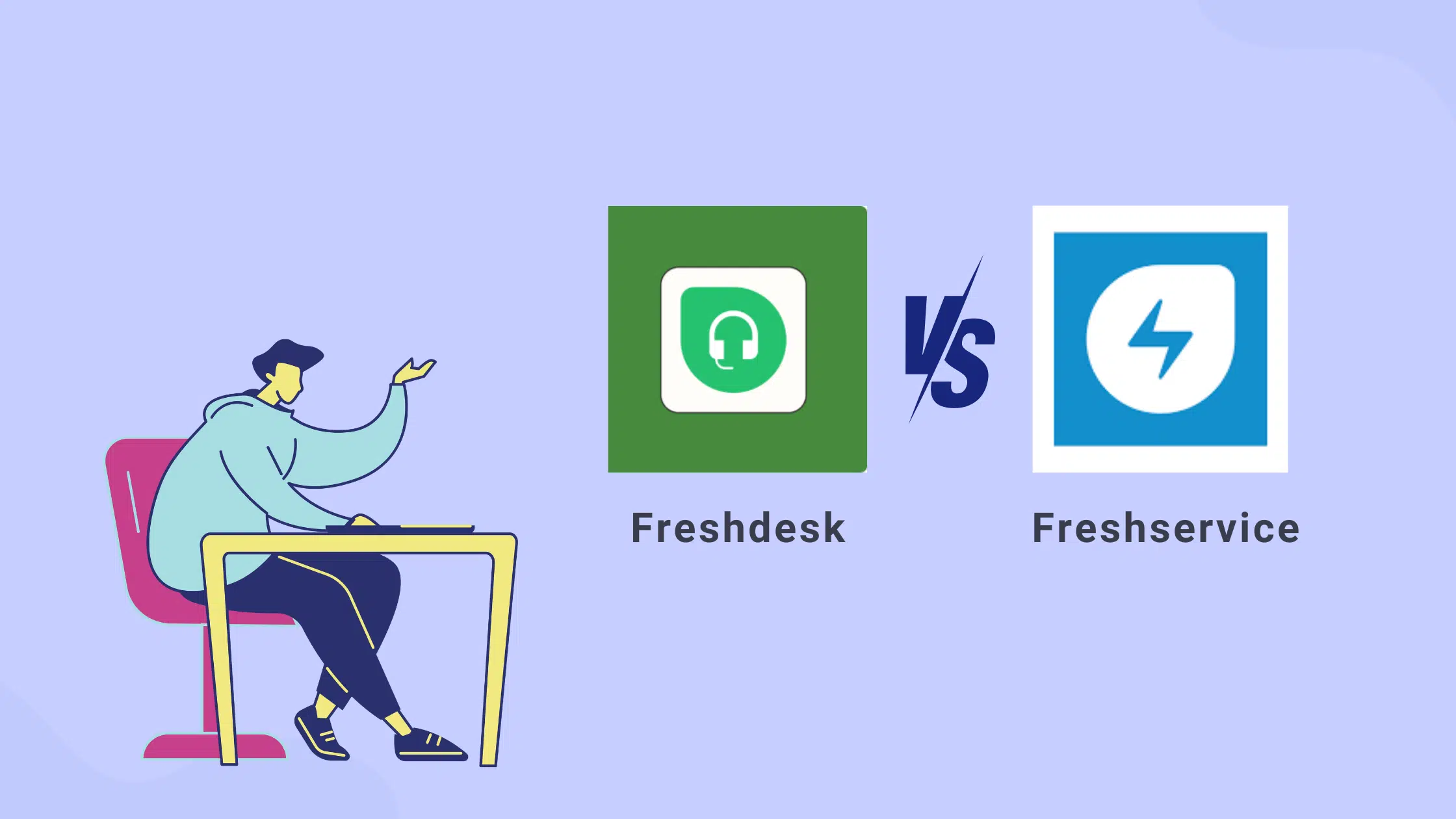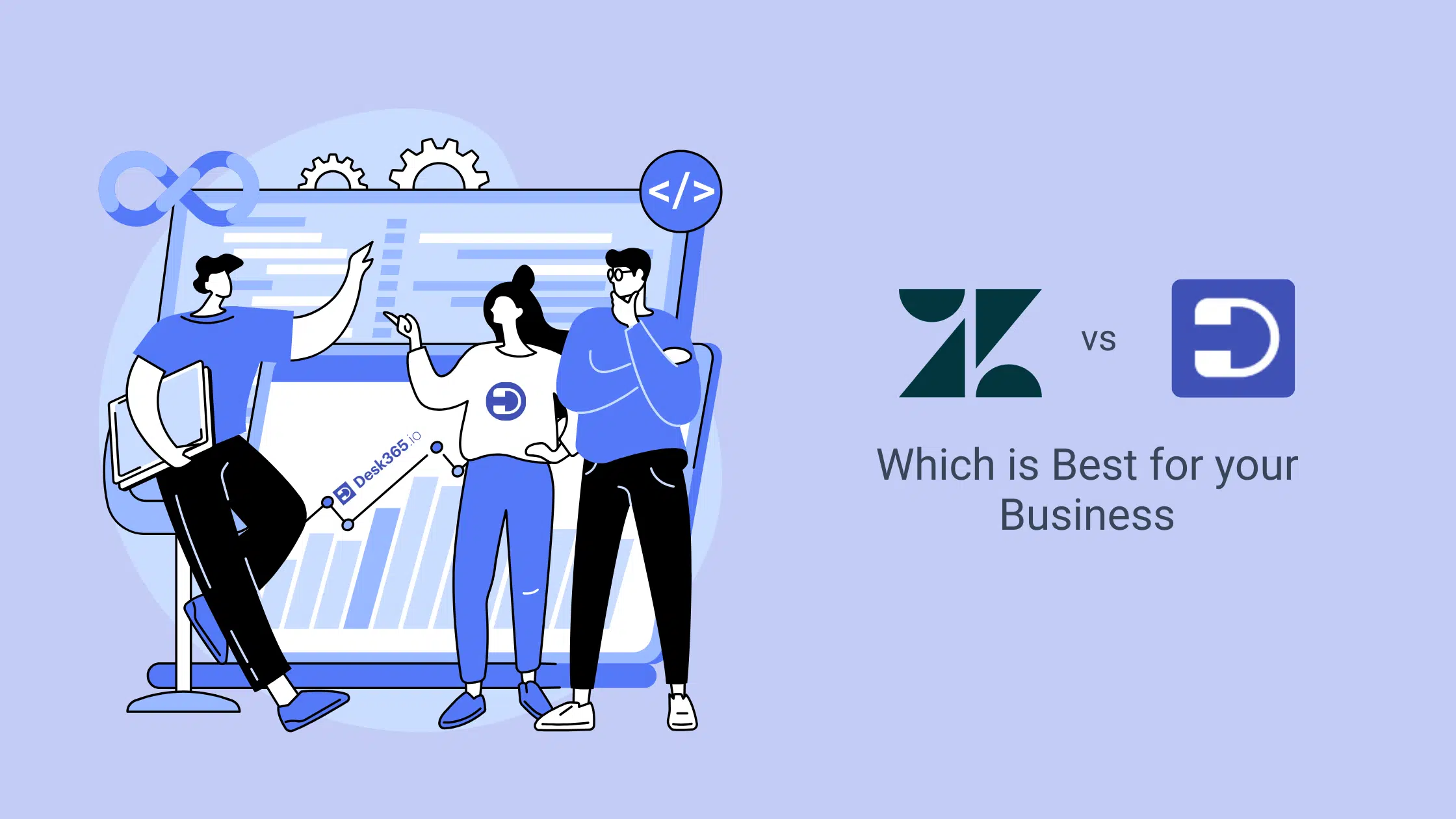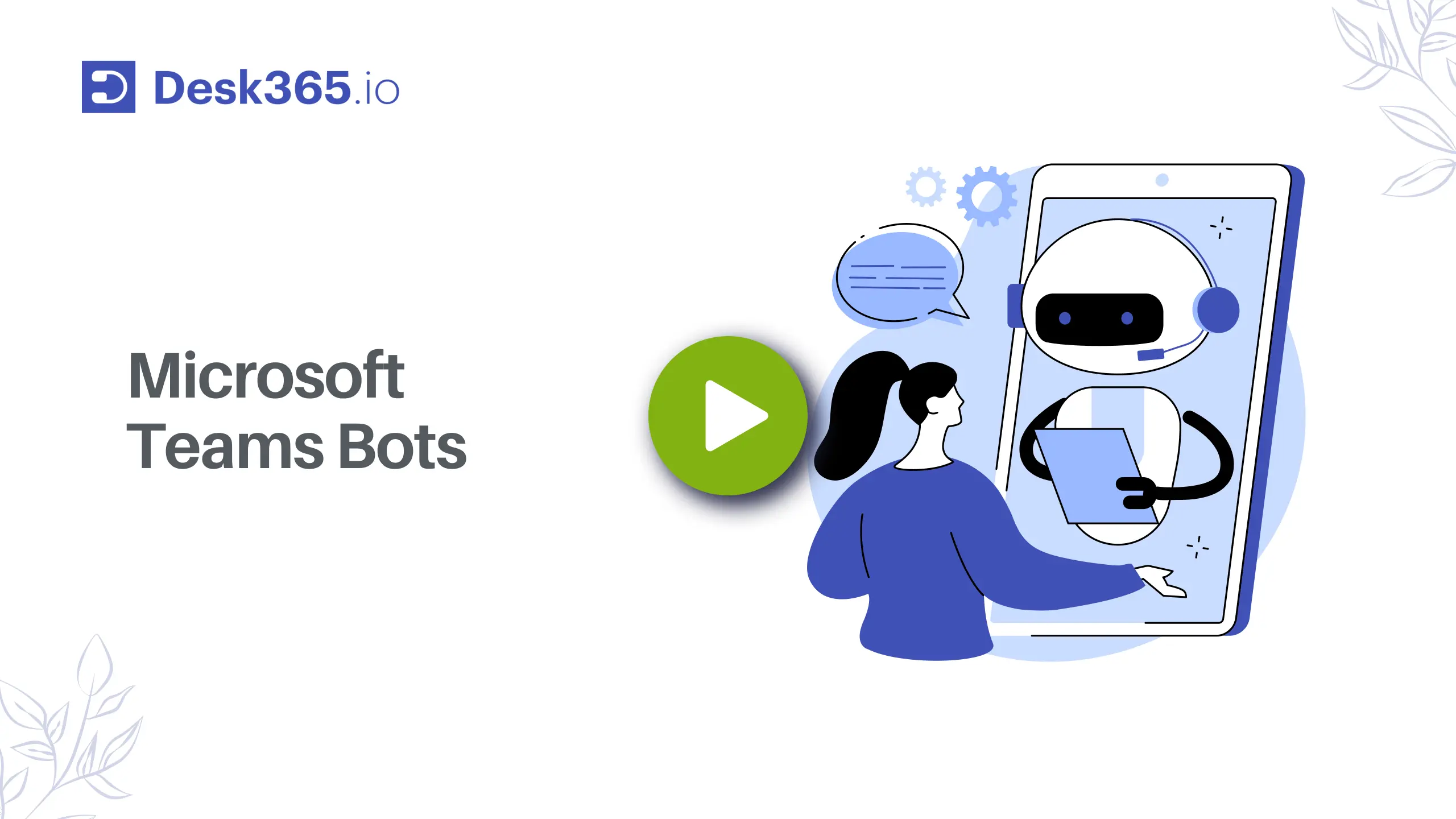Let’s be honest, searching for the perfect ITSM tool can feel like falling into a rabbit hole. You’re probably hopping between websites, comparing features, scrolling through G2 reviews, and trying to make sense of which helpdesk solution is actually worth your time (and money). And if you’ve landed here, chances are you’ve already come across two big names: Zendesk vs Freshservice.
To save you from all that back-and-forth, we’ve put together this no-fluff, detailed comparison to help you figure out which one really fits your IT team’s needs. It’s packed with insights, real user feedback, and side-by-side breakdowns.
Short on time? No worries, we’ve got a quick TL;DR summary for you right below. But if you’re up for the deep dive, let’s get started.
Zendesk vs Freshservice – Key differences at a glance
Quick Summary (TL;DR)
| Feature | Freshservice | Zendesk |
|---|---|---|
| Focus | IT Service Management (ITSM) | Customer Support / Employee Experience |
| Interface | Simple and intuitive | More complex, highly customizable |
| Ticket Management | Fast response via keyboard shortcuts | Advanced dashboard and filtering |
| Knowledge Base | Built-in with KB & forums | Guide Lite with multilingual support |
| Integrations | 500+ (stronger with Freshworks stack) | 1000+ (widely popular tools) |
| Automation | Strong for IT processes | Strong with AI features (Answer Bot) |
| Mobile App | Yes | Yes |
| Pricing (starts at) | $19/agent/month | $19/agent/month |
| Free Trial | 21 days | 14 days |
| G2 Rating | 4.6/5 | 4.3/5 |
What exactly is Zendesk?
You’ve probably heard of Zendesk as a go-to customer support platform, and you’re not wrong. It’s been a big player in the CX space for years. But what many people don’t realize is that Zendesk can also work as an internal helpdesk through its Employee Experience (EX) suite. While it’s not purpose-built for ITSM, it brings enough flexibility, customization, and automation to handle internal IT support pretty effectively.
So if you’re thinking, “Wait, can Zendesk actually work for IT teams too?”—yep, it can.
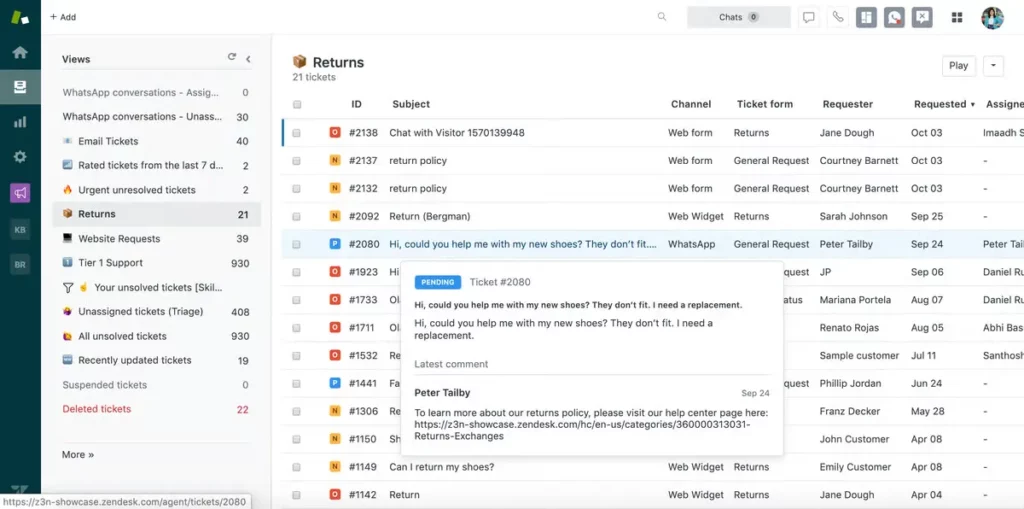
What makes Zendesk stand out:
- True multichannel support: You can manage tickets from email, live chat, SMS, WhatsApp, Facebook, Twitter, and more, all from one place.
- AI-powered features: Tools like Answer Bot and smart routing help speed up responses and reduce manual effort for agents.
- Custom dashboards & views: Tailor the interface based on your team’s priorities or agent roles. It is super useful for keeping things organized.
- Massive app ecosystem: With over 1,000+ integrations, it’s easy to connect Zendesk to your favorite tools, whether it’s Slack, Jira, Trello, or Salesforce.
- Knowledge base with Zendesk Guide: Build a self-service hub so employees can get answers without always raising a ticket.
- Advanced workflows: You can build complex routing and automation rules to match your internal support needs, even for non-IT teams.
“ Zendesk Support Suite offers a seamless way to manage customer conversations across multiple channels email, chat, social media, and more—all from one intuitive dashboard. The ability to automate ticket routing, create detailed macros, and use triggers for repetitive workflows has significantly reduced our response time.”
Best suited for:
- Customer support teams dealing with high volumes across multiple channels
- Enterprises that need advanced ticket routing and automation
- Organizations looking for an omnichannel communication experience—even internally
- Companies that value flexibility over ITIL-specific structures
What about Freshservice?
Freshservice is Freshworks’ take on a modern, cloud-based IT service desk, and it’s built with ITIL best practices baked right in. In simple terms, it helps IT teams stay on top of everything from handling incidents and service requests to managing assets, approvals, and changes, all in one centralized platform.
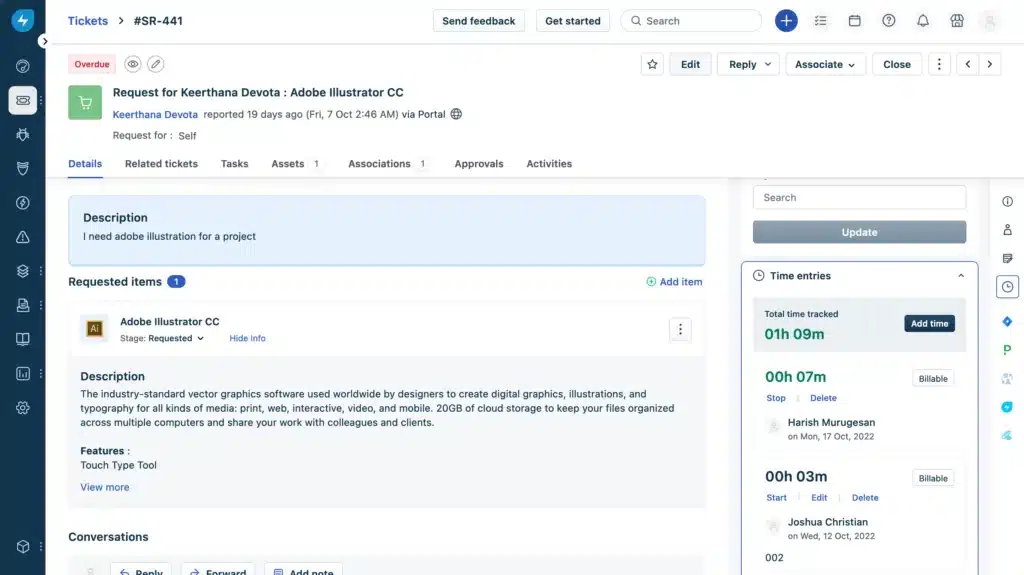
What makes it stand out? For starters, it’s refreshingly easy to use, even if you’re not super tech-savvy. The interface is clean and straightforward, which means less time figuring things out and more time getting actual work done.
“The new modern UI is very attractive and easy to use. I also appreciate the updated Asset Life cycle Management feature, which is especially helpful for IT professionals like me to manage the complete life cycle of assets from procurement to disposal.”
Highlights worth knowing:
- Speedy ticketing system: Agents can use keyboard shortcuts and canned responses to reply to tickets faster, super handy during busy hours.
- Built-in automation: Whether it’s routing tickets, handling approvals, or managing change requests, you can automate a lot of repetitive IT workflows.
- Tight integration with other Freshworks tools: If you’re already using Freshdesk or Freshchat, everything works together like a charm.
- Self-service portal: Employees can find answers on their own through a knowledge base and forums—with less dependency on IT for common questions.
- Strong reporting: Generate detailed analytics and custom reports to track team performance, SLA compliance, and more.
- Asset management: Keep tabs on hardware, software, and other assets with features like discovery, tracking, and lifecycle management.
- Customizable workflows: Tailor processes to match how your team actually works—without needing to code.
- Mobile app support: Stay connected and manage tickets even when you’re on the move.
Best suited for:
- Growing mid-sized to large IT teams who want something scalable but not overwhelming
- Companies already using other Freshworks tools (you’ll feel right at home here)
- Teams that want an ITSM tool that’s powerful but still intuitive and beginner-friendly
Zendesk vs Freshservice : Pros and cons
Alright, so you’ve seen what Freshservice and Zendesk can do on their own. But how do they really stack up when you compare them head-to-head?
Here’s a quick look at where each tool shines, and where they might make you pull your hair out. This should help you decide which one fits your team’s needs better.
Freshservice Pros
- Built for IT from the start: Freshservice is designed with IT teams in mind. It has everything you’d expect, incident management, change tracking, asset monitoring, etc.
- Clean and easy to use: The interface is super intuitive. Your team won’t need a training bootcamp just to figure things out.
- Automation that actually helps: Approvals, ticket workflows, notifications. You can automate a lot of repetitive stuff to save time.
- Asset management: Want to track devices, software, or even warranties? It’s all included.
- Works great with other Freshworks tools: Already using Freshdesk? It all connects smoothly.
- Solid mobile experience: Handy if your IT folks are often on the move or working remote.
Freshservice Cons
- Not super customizable: You can do the basics, but if you want really tailored workflows or a fancy custom UI, it can feel limiting.
- Fewer integrations: Compared to Zendesk’s massive app marketplace, Freshservice keeps it a bit simpler.
- Pricing can add up: Once you start scaling, adding more users or unlocking premium features, it can get a little expensive.
- Not made for external support: If you’re looking to support customers as well as employees, this might not be the right fit.
Zendesk Pros
- All the channels, one platform: Email, chat, WhatsApp, Facebook—you name it, Zendesk handles it.
- Tons of integrations: With over 1,000 apps, chances are whatever tool you’re using already plays nice with Zendesk.
- Smart automation & AI: Tools like Answer Bot, intelligent routing, and macros help your team move faster and stay on top of things.
- Custom everything: Views, workflows, reports.
- Great for both customer and employee support: If you’re supporting people inside and outside your org, Zendesk lets you do both from one platform.
Zendesk Cons
- Not really made for IT: Zendesk wasn’t built for ITSM, so things like change management or CMDB aren’t native features.
- Takes time to get used to: It’s powerful, but a bit overwhelming at first—especially if your team’s not used to it.
- The pricing maze: Zendesk’s pricing isn’t always straightforward. Add-ons like AI bots can quickly bump up the cost.
- Setup can be time-consuming: Getting Zendesk to work the way you want (especially for IT support) might take a bit of tinkering or admin help.
Zendesk or Freshservice? Or maybe something better?
If you’ve made it this far, chances are you’re deep in the helpdesk research rabbit hole, comparing features, reading reviews, checking pricing pages. We’ve all been there.
Zendesk and Freshservice both have their strengths:
Zendesk is great if you need multichannel support for external customers, especially if you’re managing high ticket volumes.
Freshservice shines when it comes to IT support and asset management, with solid automation and a user-friendly interface.
But here’s the thing. They can also be overkill, or just not be quite the right fit depending on your needs. That’s where Desk365 comes in.
Why Desk365 deserves a spot on your shortlist
It’s built for modern IT teams who want all the right features without the complexity (or the price tag). Desk365 gives you:
✅ A clean, easy-to-use interface
✅ Built-in IT workflows like SLAs, automation, and custom ticket forms
✅ Deep integration with Microsoft Teams
✅ HIPAA-compliant uploads (great for healthcare and regulated industries)
✅ Friendly pricing — no surprise add-ons
And best of all? It actually works with your team instead of making you adapt to it.
Real-life switch: From Zendesk to Desk365
MMRO, a healthcare organization, struggled with Zendesk’s rigid workflows and slow processes. After switching to Desk365, they streamlined operations and improved compliance without adding complexity.
Before (Challenges)
- Internal IT + patient support in one cluttered system
- Difficulty meeting HIPAA & SOC 2 compliance
- Limited flexibility & reporting
- Delays from incomplete tickets
- Complex setup & management
After (With Desk365)
- Separate helpdesks for IT & patient support
- HIPAA-compliant uploads & secure workflows
- Custom ticket forms with required fields
- Better workflows = no SLA breaches
- Easy setup, no tech team needed
If you’re tired of tools that feel like they’re working against you, maybe it’s time to try something that just makes sense.

